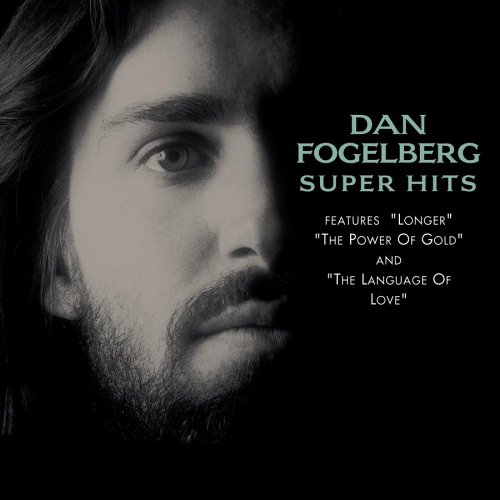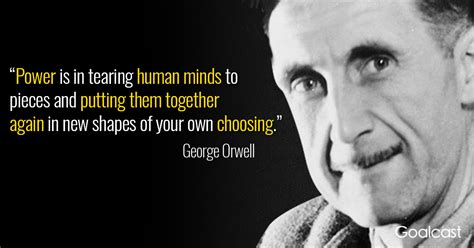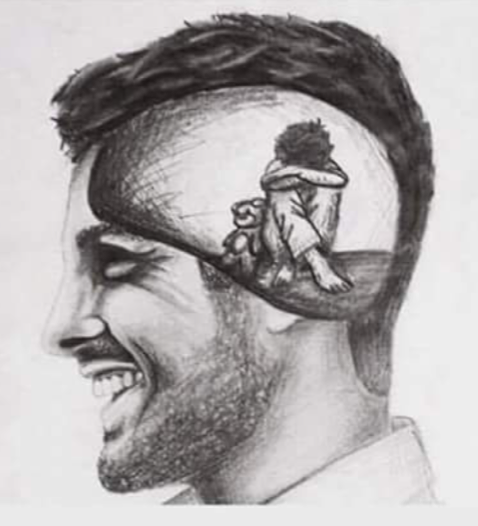|
Word Gems
exploring self-realization, sacred personhood, and full humanity
How To Sit Quietly
In A Room Alone
|
The Course In Miracles makes, what seems to be, the unreasonable and far too generalized, assertion that each and every aspect of the unenlightened mind represents some form of attack-thought. This struck me as too much and inaccurate; however, here’s what I found.
|
return to the "contents" page
Making one’s way through the Course, one becomes accustomed to the non-intuitive statement. You almost get used to it. But sometimes, it feels like it goes too far; or not.
attack thoughts
Lesson #23 of the Course’s “Workbook” offers instruction on how to escape this “vengeful world.” Its term "attack thoughts" might suggest a disturbed and warlike person, but there's a subtle aspect to this that addresses all of us.
We're given this headline,
"I can escape from the world I see by giving up attack thoughts."
The purported narrator of the Course, Jesus, explains that we find ourselves immersed in the spirit of this bellicose world because we, ourselves, have been poisoned by negative thinking.
symbol of vengeance
Further, he states, we experience ourselves sinking in this negativity because everything we see in the world “is a symbol of vengeance.” And then he doubles down on this all-pervasiveness with, “Each of your perceptions of ‘external reality’ is a pictorial representation of your own attack thoughts.”
It's a “world that you have made, but you do not see yourself as the image maker." Our own attack thoughts have created this sense of evil world, and escaping from attack thoughts is a good definition of “salvation”; because without this putting away of attack thoughts, we will never know peace of mind.
my assessment
First impressions of these statements, somewhat reluctantly, led me to agree with most of it: Attack and counter-attack is so common in what we see in the world. But just how widespread is this malady?
The Course says, not only is “each” of our perceptions involved with this problem, but we ourselves have created this sense of all-encompassing trouble. I could accept that much of my thinking has been poisoned by the negative spirit of this world, but - are all of my perceptions, “each” one, a “pictorial representation of external reality”?
And then I thought, wouldn’t it be more like I fade in and out of a negative attitude, with at least a few bright patches punctuating the checkered main?
We might hope for this mitigation. But I considered that the Course is addressing the unenlightened mind, and so what it says will apply, 100%, to the mind of darkness. It’s easy, though, to begin to make exceptions for oneself: “Well, maybe I’m a little further along than the baseline by this point, and so maybe it’s not 100% of my thoughts.”
Maybe; but maybe not as much as we’d like to believe. I looked at the statements again and read the all-inclusive judgment: that, what we perceive in this violent world is an expression of our own attack thoughts.
maybe all does mean all
If this is true, just how do attack thoughts create the world we live in? I thought about this and began to admit - maybe the Course’s statements weren’t quite so wild after all.
I brought to mind some things that happened to me in my teen years. I’ve written about the incident of Dad taking me to see that priest, who was so insulting to me. And I still recall, during his attacks, silently promising myself that I would study and find out the truth for myself.
However, as I recounted these images from 50+ years ago, I was suddenly brought up short and jerked into a realization: “I guess you could say that all of the study I did became a kind of ‘counter-attack’ to the inquisition I suffered with that priest.” This was a strange thought for me.
the long concatenation of subtle effect
But I had to concede, at least in the beginning, and for a long time, this is exactly what I was doing. I was defending myself. My academics had become a form of aggression. And there would ensue a whole cadre of related aspects to this: It would affect my decision to go to college, where I’d attend, and other things.
With this realization, I ventured to explore other aspects of my life. What about social elements? What about the frame of mind that causes one to begin dating and eventually marry? Are “attack thoughts” part of this, too?
affecting the deepest reaches, the hidden architectonic undergirding, of one’s spirit; this cancer has spread more than we know
Visions of the high-school years descended upon me. I saw myself as that socially awkward teen who didn’t go to the prom and was not part of the “cool crowd.” I surveyed my state mind during those turbulent years and resurrected the then-frequent anger in my spirit. I saw myself counting the days until I could leave the farm and the village for university and start a whole new life for myself.
|
looking for a brand new start...

Dan Fogelberg
Rhythm Of The Rain
|
Listen to the rhythm of the falling rain
Telling me just what a fool I've been
I wish that it would go and let me cry in vain
And let me be alone again
Now the only girl I ever loved has gone away
Looking for a brand new start
But little does she know that when she left that day
Along with her he took my heart
Rain please tell me now does that seem fair
For her to steal my heart away when she don't care
I can't love another when my heart's somewhere far away...
|
|
the cloaked attack thought
But, once again, to my dismay, I realized that so much of this venturesomeness -- which, of and by itself, was a good thing, but when run by the ego -- was just a form of “counter-attack thought.” I was going to “beat’em and show’em,” to make something of myself, and that included finding a pretty girl, getting married, and having a family. And I did.
However – and I’ve talked about this with the family – for so many years I was an angry person and hard to live with; but I didn't know why I was angry. Yes, I was accomplishing things, I was doing this-and-that, learning a lot, making something of myself; so I said; but, at the root of it all, hidden away, just as the Course warns, there was a poisoned spirit supporting it all - a whole lot of “attack thoughts.”
Your story will be different. But, as we peel back the layers of repression, and see the underpinnings of motivation, maybe not so different.
These are the troubling revelations we discover in a “small quiet room,” as part of “long dark night of the soul.”
|
everything the ego does devolves to one central pathology
All this talk of the Ego and its ensuing widespread calamity may seem overdone. Therefore, allow me another attempt to explain the pervasive nature of its sordidness confronting every human being.
What do the following 10 examples have in common?
(1) the elderly lady, visibly frightened of new information which might threaten her view of a particular god or goddess rescuing her upon transition to the next world;
(2) screaming fans, shouting with hysteria, hoping to touch, or even glimpse, an adored celebrity;
(3) billionaire corporate heads employing new technology to increase surveillance on a populace, thereby diminishing rights to privacy;
(4) national leaders, with big sloppy grins, posing as benefactors to the country’s interests, while undermining civil liberties, the rule of law, and taking to themselves more power;
(5) supervisors or fellow co-workers seeking to deny promotion or commendation, though you’ve earned it and are the best choice for the new position;
(6) social-media platforms which censor free speech because of "misinformation," meaning, it doesn't conform to a totalitarian agenda;
(7) materialistic scientists who repress, ignore, or otherwise vilify the "scientific evidence for the afterlife";
(8) a friend, lover, or family member who insults you, slants a story, attacks you, cheats you, because they disagree with, and are threatened by, your new-found beliefs.
(9) the neo-Postmodernist, the delusional “woke” adherent, occupying the lowest level of consciousness, arrogantly and vacuously proclaiming that rationality itself is part of “white man’s” oppression; that, even to be on time for work is a “white thing”;
(10) the soldier, part of an invasion force against a peaceful people, firing on, murdering, civilians because it’s his “duty” to “follow orders” of his imperialistic superiors.
We could go on listing many more: the gossip in your neighborhood who stands by her window, judging and condemning, trafficking in the mundane details of others; the college instructor who ridicules, and punishes with lower grades, those who disagree with his totalitarian leanings; the so-called news-reporter, piously claiming to have entered her profession to “make a difference,” incessantly offering selective and screened factoids to support a hoped-for Orwellian dystopia; the suicide-bomber, or the mad driver barreling into a crowd of civilians, or the shootist, seeking for publicity, or revenge; the high-school friend, once a confidante, but suddenly counting you an enemy when she veers off into new philosophical moorings; the martinet husband, psychologically, or otherwise, abusing a wife whom he does not love yet will not allow to leave his fiefdom.
What is the common thread?
In each case, a needy ego has identified with some power-structure, some external augmentation, some strong “father figure” to the inner child; an adoption of surrogate life, a face-saving production, a seeking to enhance oneself, to make oneself “more” and “above,” to feel important and a “somebody”, a propping up and bolstering, an assuagement of underlying fears of “not making the grade,” of “I am not enough,” leading to a surrendering of autonomy and critical faculties, a victimhood pathology of linking oneself to some external image of authority or purported salvation.
According to the great psychologists, in its deepest writhings, all of these examples represent the fear of death on display. In each case, a perceived locus of one's life and essence, one’s “center of being,” lies outside oneself, stands subservient to some icon of imagined greater energy, wisdom, or value. In other words, in all this dysfunction there is no sense of having been "made in the image," of “being enough,” no personal view of the limitless "inner riches," one's divine heritage as "spark struck-off from God." As such, this deficit leads to servility, to existential crisis, to forms of insanity. And therefore nearly 100% of the denizens of planet Earth are engaged in some form of the above cultism.
|
more than drinking the koolaid
The long reach of cultism encompasses much more than crackpot churches. The root idea of cult offers the sense of "cut." This core concept of "cut" leads us to images of refinement and refashioning and, by extension, development, control, pattern, order, and system.
Cultism as systemization finds a ready home in religion and philosophy which seek to regulate and redistill the patterning and ordering of ideas. However, in a larger sense, the spirit of cultism extends to every facet of society. We find it scheming and sedulously at work in politics, academia, family, corporations, entertainment, science, artistry – anywhere power might be gained by capturing credulous and fear-based minds.
See the “cultism” page for a full discussion.

|
I submit to you, every insult, abuse, affront, contempt, disrespect, misrepresentation, aggression, assailment, invasion, violation, trespass, usurpation, infringement, conflict, and war – in the history of the world, and your own personal history -- have resulted from egos, at the expense of others, attempting to feel better about themselves, pursuing to quash the sense of inner neediness, of “I don’t have enough” because “I am not enough.”
every ego wants something from you
What does it want?
It wants to use you to feel better about itself, to fill up the emptiness inside. It will attempt to accomplish this make-over by (1) comparing itself to you, finding some metric by which it can judge itself as superior; (2) deriving pleasure from you, an effort to cloak the pain within; (3) ruling over you, power-and-control measures, to enhance and propagandize itself; (4) minimizing, discounting what you represent in order to aggrandize its distorted belief system about how life works; alternatively, if demonizing doesn’t succeed, it will (5) surrender to you, call you a genius or a god, by which subservience it hopes to find security and safety under the protective mantle of a “strong father figure.”
further distillation
Can we, even more, reduce all of the above to common element?
The ego, at a deeper level, is driven to create a perception of itself as “other.” This generalized sense of “otherness” is then leveraged into a “me against them” lens of looking at the world. And it’s not just a contrariness toward other people. If others aren’t around, or even if they are, the ego can make us feel estranged from life itself and, of course, God, as well, as we blame, and set ourselves against, these for perceived unfairness.
Why is this important to the ego? According to ancient Spirit Guides, we come to this world for one primary reason: to individuate, to become persons in our own right; all other aspects of development, for the moment, are secondary.
The ego will reconfigure memories and current sensations to emphasize “otherness.” Much of this reformulation can be very unpleasant to contemplate, but it does accomplish one thing: even though at the quantum level we are connected to all, at the surface of personality “otherness” creates a stand-alone psychological entity that becomes the perception of “I”, which is the very definition of ego.
Editor’s note: Concerning the above “10 examples,” each of these represents a certain unsavory aspect of the dark side of human nature. But this skews the picture. The dysfunctional ego also operates in the arena of heroic service and commendable, stalwart mettle.
I am thinking of the celebrity artist, athlete, singer, politician or other notable who publicly dedicates his or her life to good works as a result of purportedly drawing strength from a patron saint, religious icon, or savior-god. The ensuing good works might be larger-than-life, consummated even in the face of great privation and adversity. All of which is meant to proclaim to the world, “I do all this by the power of my relationship to said patron saint, religious icon, or savior-god.”
But, is this reality? How are we to view such valorous and epic conduct? Does it happen by way of aligning one’s person with an external divinity?
We would do well to recall that any number of non-religious “secular saints” might be brought to our attention who have nobly, in a lion-hearted way, offered charitable service, even to the point of death. One example immediately comes to mind: Dr. Viktor Frankl, in the concentration camps. He accepted the task of encouraging other inmates, despite near-starvation and often-beatings by the guards. He served the contagious typhoid dying, and, more than once, refused opportunity to escape the camp in order to remain with the suffering.
The dysfunctional ego is led by its foundational premise, “I don’t have enough” because “I am not enough.” As such, it looks for salvation from an outside source. This is pathological and takes us in the wrong direction, far from sacred destiny of living from one’s sacred center, the true self, one’s inner connection to God.
We are not to conduct ourselves as little children, living under the mantle of a “strong father figure,” a patron saint, religious icon, or savior-god.

We are to open our eyes to the inner riches, the innate “made in the image” reservoir of strength, available to all of us as sons and daughters of God.
|
|

